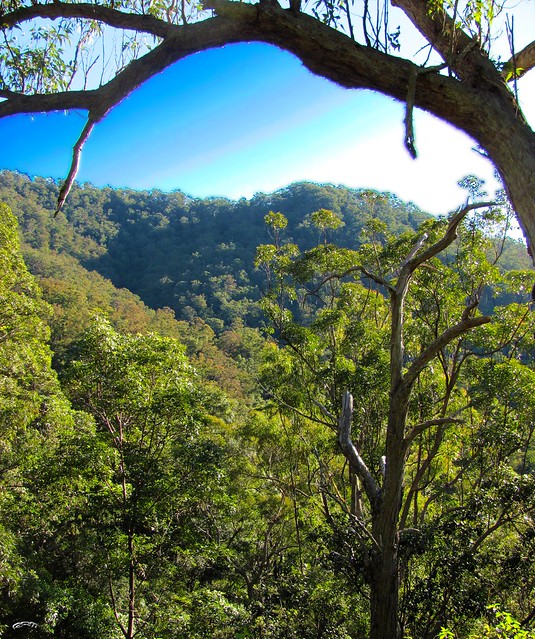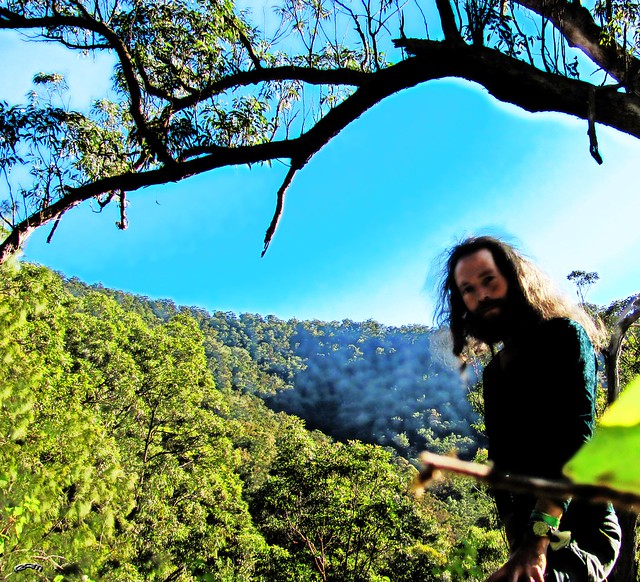More than enough dirt under his fingernails
Seeing the forest for the trees
Growing up near Taree [Australia], Ken Henry would wade out, with his father and brothers, in the river estuaries of the NSW North Coast and stand there, up to his armpits, to catch flathead late at night on the turn of the tide. That was 35 years and more ago. He learnt early to move with stealth among predators. Henry still risks deep water. He still lives with sharks. And he still stalks flathead fish and, at times, boofhead ministers…
The Howard Government appointed Henry head of the Commonwealth Treasury on April 27, 2001. At 43 he was already one of our most respected bureaucrats. He has an honours degree in commerce and a doctorate in economics. For five years in the late '80s and early '90s he was Treasury adviser to Paul Keating. Now, at 49, he has 22 years in Treasury and Peter Costello is his sixth treasurer. Last Australia Day, the Government made him a Companion of the Order of Australia, our highest gong. The award jointly acknowledged his "care of native wildlife". It meant the real thing, not the politicians.
Henry dedicated that speech to "my father, John Henry, timber worker". It was the year the timber worker's son became the most senior economic bureaucrat in the country.Here is what he said, in part:
"At the age of 13 I didn't know what economics was. But I had already had my first lesson in economic policy. It is, quite plausibly, a lesson that may well explain why I am where I am today."Some 38 years ago, my parents walked off the dairy farm they had been leasing and my father returned to cutting railway sleepers and, later, logs for local sawmills. For all but a few years of the remainder of his working life, my father worked in the timber industry, mostly felling logs in state forests. He worked long hours, leaving at dawn and returning after sunset.
"One day, about 30 years ago, he arrived home in the late afternoon. He had something he wanted to show his three young sons. He bundled us in the car and took us down to the sawmill. There, on the ground was the biggest log we had ever seen. When our father stood at its base it was apparent it measured some two metres in diameter. And it was 12 metres in length, as long a log as a truck could carry. All up, about 7000 super feet of timber."He was very proud of his achievement: to have taken out a log of that immense girth, single-handedly, with nothing more than his chainsaw. And we were very proud of him.
"Then the questions started. 'Dad, how old do you reckon that tree must have been?' 'Oh, very old. At least 100 years. Anywhere up to 500 years.' 'Where did you find it?' 'It came out of the Lansdowne State Forest.' 'How many houses do you reckon you could build out of it?' 'The framing for at least three houses.' 'So how much would that log be worth?' 'I'm not sure, but certainly thousands of dollars.'"When I think about it now, it seems to me it could have been at that instant that my future career was set. The continuing questions and answers went something like this: 'How much do you get?' 'Not much, only a couple of hours' wages' 'So the sawmill gets the rest?' 'Not all of it. The state government charges royalties on all timber taken out of state forests. Royalties are like a tax.' 'So what would the royalties be on that log?' 'A few dollars I guess, perhaps not that much.'
"Our father told us he had cut down hundreds of trees just like the one from which this log had come, but he'd had to leave them lying in the bush. He explained that old hardwoods typically had hollow cores - 'pipes' he called them - and the sawmill didn't consider it economic to pay the transport costs to bring in a log with less than one foot of solid timber around the hollow core.
"The problem was you couldn't tell how hollow a tree was until you cut it down. That didn't trouble the sawmill, because it paid royalties only on what it took out of the forest. The Forestry Department didn't get a cent for what was left behind on the forest floor. So hundreds of trees, hundreds of years old, were torn down, their carcasses left to rot where they fell. The memory of that afternoon has troubled me ever since."I don't know if I managed, at the age of 13, to discover the source of the sense of unease I felt at the time. But if I did, I hope that as I looked at that enormous hardwood log, that I found entirely unacceptable the fact that somebody could legally appropriate, for only a few dollars, this extraordinary asset of the people of NSW that would take perhaps hundreds of years to replace. I hope this smacked to me of highway robbery. I hope I was less than impressed that the elected representatives of the people of NSW appeared to be demonstrating such disregard for the protection of their citizens' property. I hope I wondered about the ability of governments - and not just the venal - to redistribute wealth so arbitrarily, and to disenfranchise future generations. And I hope I vowed that one day I would do something about it…
"Growing up on the NSW mid-North Coast, I was reminded, constantly it now seems, of the failure of economic policy. I recall my disquiet on learning that ancestors on both sides of my family were 'cedar getters'. 'What's a cedar getter, Dad?' What I heard him say was something like: 'Well, that's why we don't have cedar trees anymore.'
"I remember being concerned when I learned that every generation of Australians caught fewer and smaller fish than the preceding generation. I remember learning that weeds were not native plants, and that rabbits that destroyed river banks and foxes that killed chooks were not native animals. I remember learning that soil erosion was caused by humans. I remember being horrified by the apparently wanton destruction wrought by the rutile miners who ripped through the sand dunes where I used to surf, leaving a moonscape devoid of the stunning Christmas bells that used to grow there in profusion.
'"I remember being perplexed when the Killabakh Creek that tumbled down through the rainforests of the Comboyne Mountain and then swept around the periphery of my maternal grandmother's dairy farm simply dried up.
"I remember being absolutely staggered to learn that one of the conditions of my paternal grandfather's retaining possession of his 600-acre 'soldier settler' block of rainforest timber was that he clear a certain number of acres each year, and watching over the years as the trees were replaced by bracken fern and lantana, and as the soil washed into the creeks and gullies, replacing the native fish that had long since been exploited to extinction. And I remember, too, that as the weeds spread and farming became too difficult, my grandfather turned to more facile means of making a quid, stripping the native orchids out of what was left of his rainforest property. And if I didn't understand the 'how' or 'why' of these things at the time, I did at least develop a deep conviction that something was horribly wrong…
"When I asked my father the other day why the Killabakh Creek dried up when I was a schoolkid, I suggested that unpriced access to irrigation water was surely the culprit. He thought that might have had something to do with it. 'But don't forget,' he added, 'we fell timber all over the Comboyne Mountain, pushing in dozer and snigger tracks and roads for the log trucks. That's where the water would have gone. You can see it from the erosion left behind.' My question for policy advisers, then, is this: how much erosion are we going to leave behind?"
by Alan Ramsey - Sydney Morning Herald April 7, 2007 - http://www.smh.com.au/articles/2007/04/06/1175366473874.html?page=fullpage#contentSwap3
Images - http://farm7.static.flickr.com/6183/6060913334_bc5e84f8e3_b.jpg
http://farm7.static.flickr.com/6187/6060347959_a7345b8eb7_b.jpg
For further enlightening information enter a word or phrase into the search box @ New Illuminati or click on any label/tag at the bottom of the page @ http://nexusilluminati.blogspot.com
And see
The Her(m)etic Hermit - http://hermetic.blog.com
New Illuminati – http://nexusilluminati.blogspot.com
New Illuminati on Facebook - http://www.facebook.com/pages/New-Illuminati/320674219559
This material is published under Creative Commons Copyright (unless an individual item is declared otherwise by copyright holder) – reproduction for non-profit use is permitted & encouraged, if you give attribution to the work & author - and please include a (preferably active) link to the original along with this notice. Feel free to make non-commercial hard (printed) or software copies or mirror sites - you never know how long something will stay glued to the web – but remember attribution! If you like what you see, please send a tiny donation or leave a comment – and thanks for reading this far…
From the New Illuminati – http://nexusilluminati.blogspot.com


No comments:
Post a Comment
Add your perspective to the conscious collective